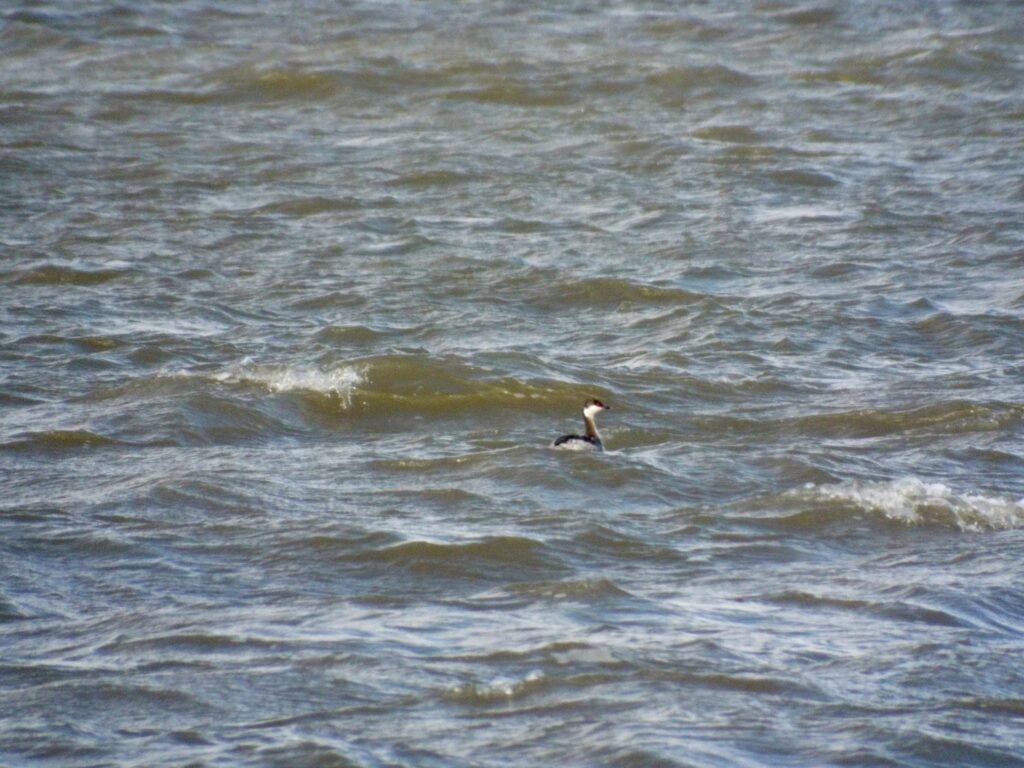




This week for Flora and Fauna Friday it’s an odd pair of not-quite-ducks, the Pied-billed Grebe (Podilymbus podiceps) and the Horned Grebe (Podiceps auritus).
A light fog folds and wraps around a pond, a wispy woolen blanket on a chilly winter morning. With the stab of first light the fog recoils and rolls aside to let the waters greet the day, revealing a small and curious shape paddling away. A Grebe taking its leave. Here on Edisto Island we welcome two species of Grebe each winter, the Pied-billed Grebe and the Horned Grebe. Both are small water-birds that stand out from all the rest. Grebes sit lower in the water than most, with short pointed bills, a head that seems a little small, and a neck that looks just a little too long. Grebes also have paddle-like feet, with each toe being flattened, which propel them across the water as they cruise or when getting a running start to take flight. They inhabit open water habitats and hunt by diving underwater to pursue prey. Their diet is primarily crustaceans, small fish, aquatic insects, and mollusks. Our two Grebes occupy different ecological niches and are starkly different in appearance.
Pied-billed Grebes in winter are a uniform walnut-brown only accented by a more umbral shaded mantle and a white rear-end. Their beady eye is set in a thin, pale ring and their short but robust bone-colored bill is split in twain by a dark bar. Our Pied-billed Grebe is a year-round resident, although far more numerous on Edisto in winter. When wearing their summer best, they don’t look all too different, but their bill bleaches to a pearl white and is starkly split by an oil-black band. This bicolored bill gives them the “pied” in their common name, which simply means black and white. A Pied-billed Grebe’s shape is more compact than other Grebes and their drab plumage can make them hard to discern from other floating fowl at a glance, but their low buoyancy and small head will shortly let you resolve them. Pied-billed Grebes are partial to calm and shallow ponds, lakeshores, and brackish impoundments. They can be found all across the state in these quiet water bodies. They also have a curious habit of sometimes sinking, rather than diving, especially when they’d rather not be seen.
The Horned Grebe in winter is a bicolor blend of snow-white below and shale gray above. Their neck is longer and their bill more knife-like than the Pied-billed Grebe. Yet this drab appearance is shattered by a blatant and brilliant ruby-red eye. In their summer breeding plumage, which we almost never see in the Lowcountry, these drab tones are eschewed for rich cinnamon, deep ebony, golden khaki, and ink-stained black. Horned Grebes are most easily spotted on Edisto bobbing in the surf along our beaches or riding the tides in our river inlets. They brave far more harrowing habitats and salty shores than the pond loving Pied-billed. Horned Grebes have also taken a liking to manmade lake reservoirs in the upstate, where both our Grebes can now sometimes be seen cohabitating.